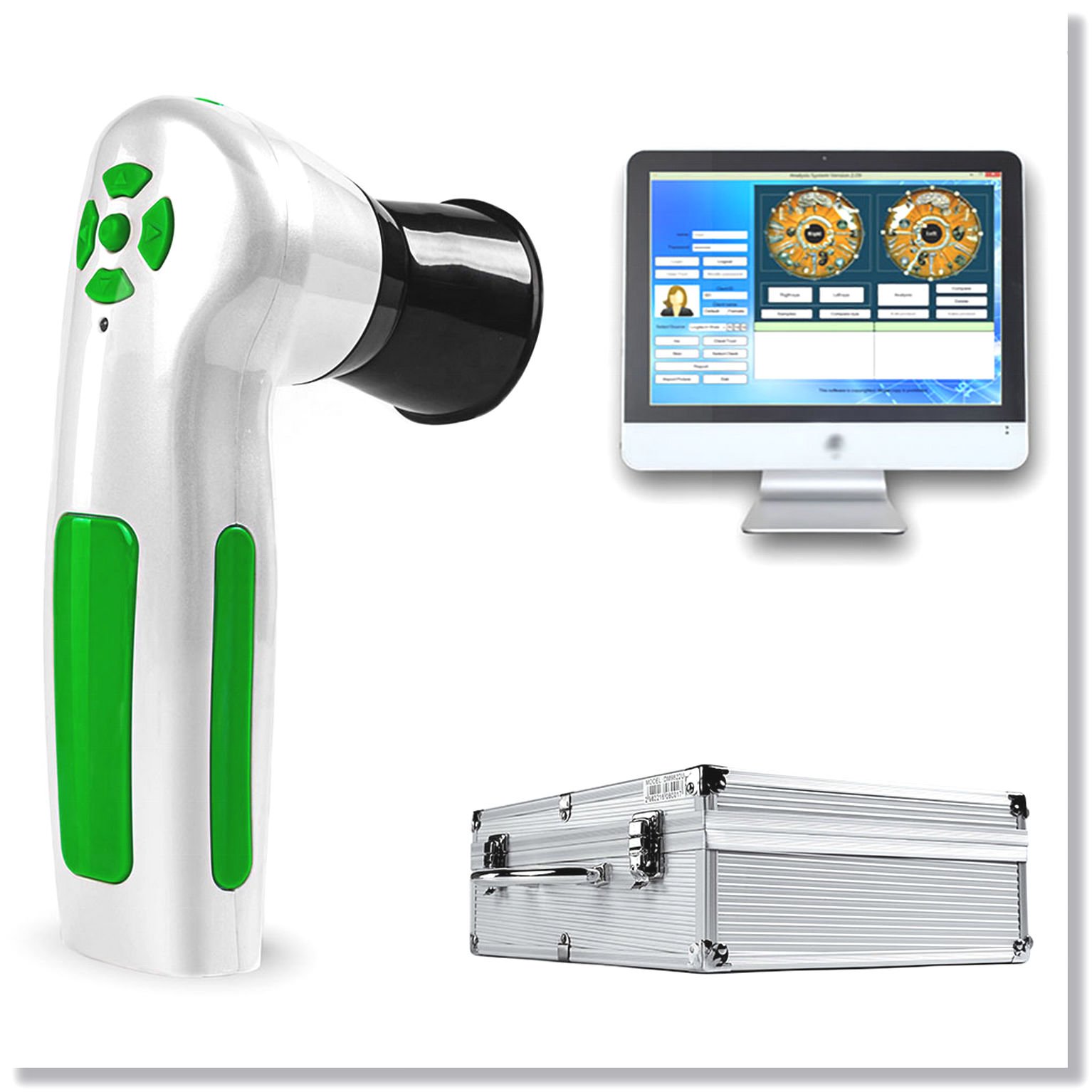
bernardjensen Services
bernardjensen Services
Nutritional Consultation
Iris Analysis
Iris Photography
Educational Programs
Referral Programs
Cleansing FAQ
Skin Brushing
Bernard Jensen International offers highly recognized and sought after health and well being services. Some of the most popular services include private nutritional consultations with Dr. Ellen Tart-Jensen. This is where you have an opportunity to privately discuss any health conditions and well being improvement goals you have. During your nutritional consultation Dr. Tart-Jensen can personalize a program to help you meet your health and wellness goals.
You will also find specialized services in Iris analysis and Iris photography. Learn how and where you can get access to these specialty services below.
One of the most important service offerings are Bernard Jensen International educational programs. Multiple seminars in nutrition, iridology, iris analysis and cleansing are provided throughout the year. You will also find Dr. Ellen Tart-Jensen frequently speaking and educating at various conferences throughout the world. Check our events calendar to see what upcoming educational opportunities are available.
Click on the links above to access the popular services to support you in your healing journey.

What is Iridology?
What is Iridology?
Iridology is the study of the color, pigmentations, and structure of the iris or colored portion of the eye as they relate genetically through reflex response to the strengths and deficiencies of the body systems.
Iridology complements all the health sciences as it furnishes information, not only about what may be ailing the client, but also about the root cause of the disorder.
In addition, many Iridologists observe the border of the pupil as well as the vascular markings in the sclera to help them better understand more about the overall health of the person.
We believe that Iridology is one of the best assessment tools available to discover which areas of the body are genetically strong and which are deficient. Using Iridology we can analyze the overall constitution according to specific iris colors and markings.

Iridology: Do the Eyes Have It?
Iridology: Do the Eyes Have It?
C. Eugene Emery, Jr.
The eyes are sometimes called the window to the soul. We watch them to determine whether a person is sincere or lying. When we encounter people, we usually notice their eyes first. So perhaps it’s not surprising that some people believe that eyes provide a window to a person’s health as well.
Signs of a few diseases—most notably atherosclerosis and Wilson’s disease (a disorder of copper metabolism)—can appear in the colored portion of the eye (the iris). But iridologists profess that the iris can be used to diagnose virtually any disease. They claim that examination of eye markings can reveal not only current health problems but indications of past problems. Typically, they consider themselves “holistic” and recommend dietary supplements to correct whatever problems they see.
I first heard of this practice when a local television station aired a story featuring claims by a local iridologist who, according to the TV reporter, had successfully diagnosed someone’s back problems. Another iridologist in nearby Westerly, Rhode Island, was getting coverage in the New London Day newspaper. Subsequently, I discovered that a medical doctor also was dabbling in the field. I decided to investigate.
My first stop was an interview in Westerly with Joseph M. O’Reilly, Jr., a former judo and yoga teacher who called himself a “registered nutrition consultant” and said he had a “Ph. D.” in nutrition from Donsbach University (a nonaccredited correspondence school). Before getting into the nutrition field, O’Reilly said, he had been a parole officer in Florida and a certified sex educator.
O’Reilly told me that iridology could detect cancer with 99% accuracy. He said the shape of the eye and pupil could reveal psychological problems and be used to determine when a person is near death. He also reported that he discourages the use of drugs because “when you put drugs in the body, it just drives the illness deeper into the tissues and cells. You’re just masking the symptoms. You’re not getting to the cause. ”
When he examined my eyes, O’Reilly saw “caffeine spots from too much coffee,” but said the spots could also be caused by too much alcohol. (I never drink coffee and, at most, drink one can of beer per month.)
The iridologist featured in the TV broadcast, Rosemary Hill, also taught at a local holistic health center. During her interview, she stressed that she doesn’t diagnose diseases but “reads conditions in organs that could be construed as a weakness for a disease.” But if you have a heart condition, she said, it would be obvious in the eyes. She also reported that she was in the process of changing her eye color from an unhealthy brown to a healthy blue.
When Hill examined my eyes, she reported some constipation (wrong), cardiovascular problems (nope), a high mucus and acid body (l have no idea how to measure this), stress in the foot area (not that I know of) and fatigue (sorry). She did say correctly that I ate lots of dairy, flour, red meat and sugar products, but that assessment would probably fit most Americans. Next I arranged a test with the help of Dr. Robert Bahr of the Rhode Island Ophthalmological Society, who took slides of the eyes of eight people with various medical problems, such as lung disease, headaches, deafness, and a history of cancer. When I asked Hill to match the slides to the health problem, she declined, explaining that “I don’t work that way.” Instead, she suggested that I try to match her readings to the slides.
Working under those rules, Hill—who had said that iridology was accurate at least 75% of the time—missed the affected organs or body parts in 6 out of 8 slides. That’s surprising if you consider the fact that each of her readings included many organ systems. For example, in the case of a nearsighted person with a history of fainting and a pulse of 54 when the slide was taken, Hill noted “severe acidosis,” “not digesting proteins,” “intestinal tract is a little depressed,” “there is a difficult lung problem there,” “probably tonsils in there too,” “mucus throughout the system,” “congestion in the head,” “not absorbing nutrients,” “esophageal, leg problems,” “shoulder problem” and a “somewhat spastic colon.”
In the two cases where Hill named an organ or body part that actually might be related to the patient’s problem, she was still quite inaccurate. In the slide of a woman with daily headaches, Hill saw “toxins from the bowel dumping into the head area” and blamed “parasites” for the problem. For a woman with hypoglycemia, Hill cited an undefined “glandular problem, ” but she also reported a “possible thyroid problem” and “a lot of toxins in the blood stream.”
The second person to take my test was Robert S. Carson, M. D., medical consultant for the holistic health center. “You can come out with some uncanny diagnoses by looking at the iris,” he said. “The scientific evidence for this is very solidly based. ”
Unlike Hill, Carson did attempt to match the eye slides to the medical records. Despite at least two guesses in each case, he missed the fact that one woman had had a mastectomy and hysterectomy, that another had broken both arms and a leg, that another suffered from headaches and stomach problems, and another had hypoglycemia. He correctly matched the person with severe lung disease—on his second try.
My test also included a pair of slides showing a glass eye against a black background. Although the eye had no lashes and fingerprint ridges of one of the fingers holding it up to the camera were visible, neither of the iridologists mentioned anything amiss.
Bernard Jensen, D.C. (1908-2001), the leading American iridologist, claimed to have worked with over 350,000 patients during almost 50 years of active practice. He stated that “Nature has provided us with a miniature television screen showing the most remote portions of the body by way of nerve reflex responses.” He also claims that iridology reveals “tissue strengths and weaknesses” as well as “nutritional and chemical needs.” His booklet, “Iridology Simplified,” relates more than 30 diseases and conditions (including arthritis, biliousness, gallstones, obesity and tuberculosis) to “mineral deficiencies.” It also contains an “Iridology Nutrition Chart” for determining what vitamins, minerals and herbs to give “after determining those areas of the iris which show a need. ”
Jensen and two other practitioners were tested in a study published in the September 28, 1979 Journal of the American Medical Association. In this study, the iridologists were shown iris photographs of 143 patients, some with severe kidney disease and some with no evidence of kidney problems. The assessment of kidney problems was based on the levels of creatinine in the blood. When asked to identify the people with problems, all three iridologists failed the test .
Five Dutch iridologists failed a similar test last year when they tried to detect gallbladder disease by looking at slides of the iris of 39 patients with gallstones (proven by surgery the day after the slides were made) and 39 patients without gallstones (proven by ultrasound examination). The iridologists were correct only half the time (the result expected by chance), and did not agree among themselves about which patients had gallstones and which did not .
Iridologists use detailed charts relating the location of various eye markings to problems in various parts of the body. In 1981, the AMA Council on Scientific Affairs noted that such charts are similar in concept to those used years ago in “phrenology,” the pseudoscience that related protuberances of the skull to the mental faculties and character of the individual [3]. Russell S. Worrall, an assistant clinical professor at the School of Optometry of the University of California, Berkeley, has noted that at least 19 iridology charts exist but that all have differences in the location and interpretation of many of their iris signs.
Despite all this, iridology apparently persists for some of the same reasons psychic practices and astrology remain popular.
Since most ailments are self-limiting, most people who consult iridologists are likely to feel better with the passage of time. So if symptoms resolve while following an iridologist’s advice. the iridologist will get the credit.
Iridologists are probably helped by feedback from their patients, and patients often take the iridologist’s musings and fit them to events in their life.
Many of their claims are difficult or impossible for laypersons to evaluate. Hill, for example, contended that the iris not only reveals information about your present medical problems, but can reflect past and future problems as well. Thus, if she sees a back problem in your eyes, she can claim credit whether your back bothers you now, has bothered you in the past, or bothers you in the future. She also claimed that the structure of the iris can provide information about the health of your ancestors.
But from a practical standpoint—the ability to detect virtually any disease in the iris—the eyes clearly don’t have it.























